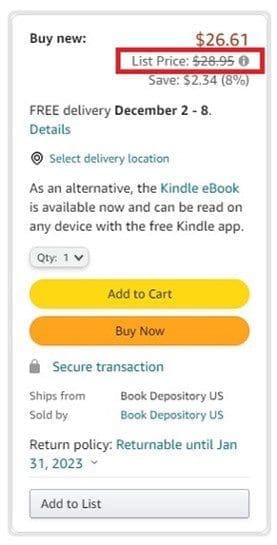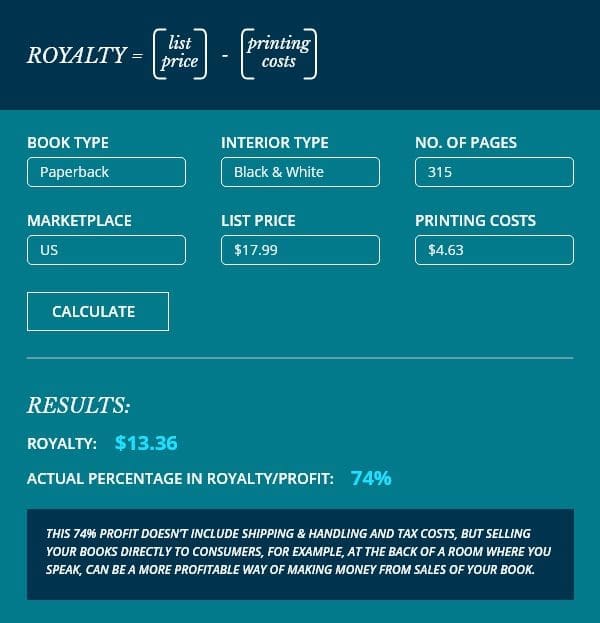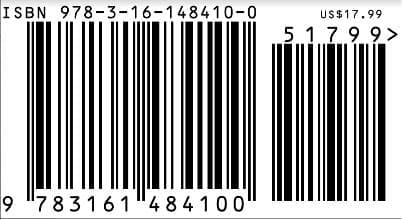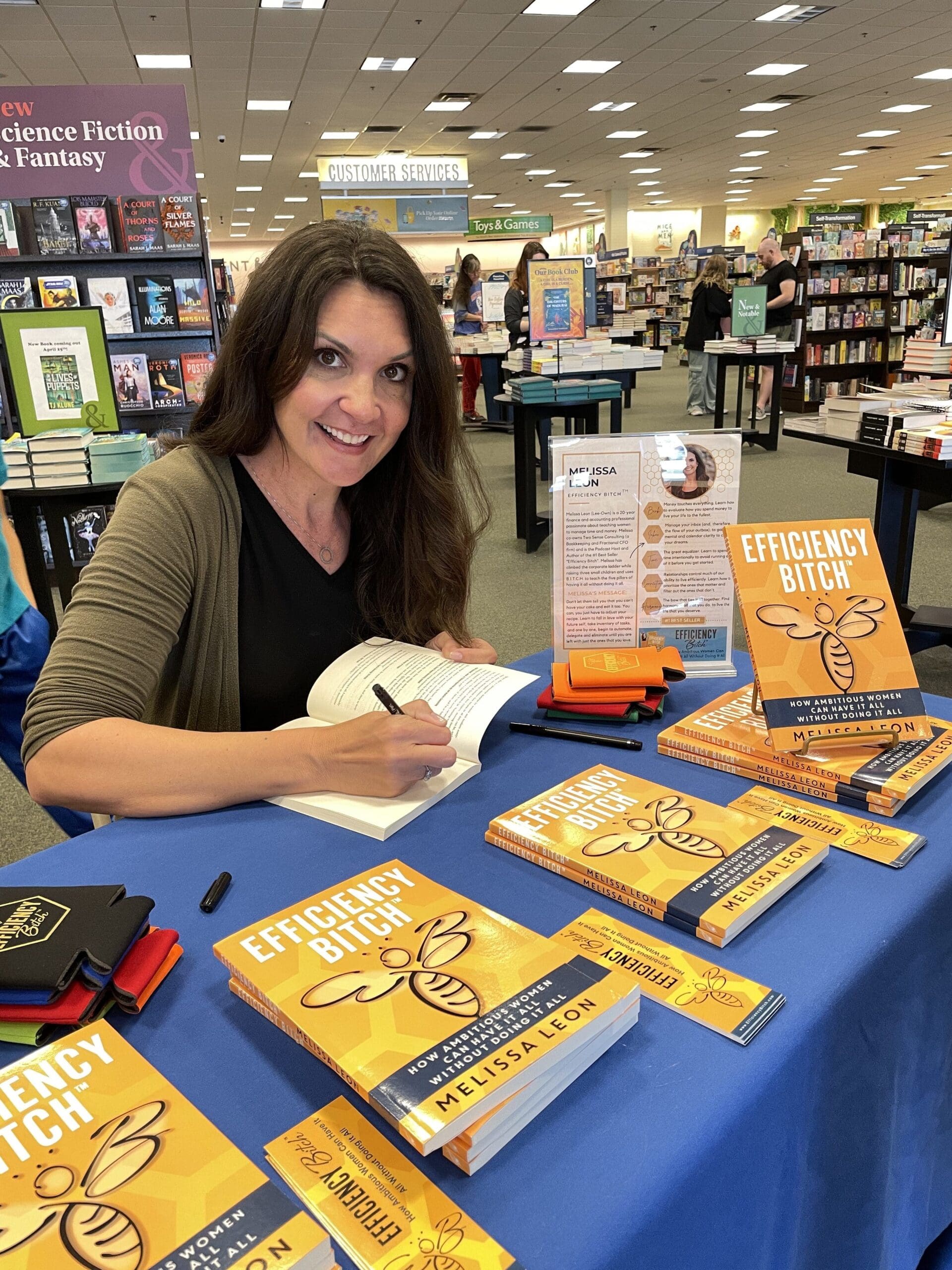Ever wonder what price you should set for your book? Do you know the difference between the list price and the sales price? If you’ve written a book, you’ll want to know the answers to these two questions before publishing your book.
You’ll also want to estimate how much in royalties you’ll get when using the 2 most important platforms for distributing your book: Amazon KDP and IngramSpark.
How to Price a Book
I’ve found pricing a book to be one of the biggest obstacles for self-published authors, so I encourage authors to keep it simple. Before choosing a price . . .
- Understand the current market in your genre for an eBook, paperback, or hardcover (genres might be business, memoir,
- Analyze your competition (what authors in your genre are selling their books for: science fiction, romance, etc.).
- Figure the profit margins (see later in this blog how to “run the numbers” using royalty or compensation calculators to confirm whether you’ll be profiting, breaking even, or taking a loss).
When it comes to actually pricing the book, consider the following:
- Book format / characteristics of the book itself (length, size,
- Your competition (how is your book different? how is it similar?)
- The profit margins (with respect to royalties received)
- Your objective/goals for the book (get paid to speak, build your business, prospect, educate your clients and customers, share your expertise, establish your credibility and authority in the industry)
Obviously, you’ll want to be aware of what your profits (royalties) will be, but when you’re determining what the cover price should be, it shouldn’t be based on the profit potential alone.
Once you’ve got a good handle on these criteria, you’ll be able to determine a good selling price while not devaluing the book.
What NOT to Consider When Pricing a Book
What you should not consider when pricing your book is how to recoup the costs you invested to write, edit, and publish the book. If you do, you’ll end up over-valuing and over-pricing the book, so fewer customers will buy it. Focusing on trying to get back what you invested will also be a distraction. Sales of a book is only ONE way of making money from your book. There are dozens of other (and much better) ways to increase your income from writing and publishing a book. Check out Author Inc: The Entrepreneur’s Secret Playbook to Skyrocketing Leads and Sales by Self-publishing a Book.
The Difference Between the List Price and the Sale Price
The List Price (also known as the Cover Price), is the Suggested Retail Price of the book that the publisher or author (if the author is self-publishing) decides to list the book for. An author’s compensation and/or royalties are calculated based off this List Price.
The Sale Price, however, is the price the book is actually being sold for. In most cases, that sale price is lower than the List Price and is normally referred to as the discount price. This sale price is controlled ONLY by the retailer (or the entity selling the book, such as Amazon, Barnes & Noble, Costco, or an Indie bookstore). The author and/or publisher have no control over what price the retailer decides to sell the book at. The retailer will offer the book for less to increase sales. When the retailer does this, they are limiting the profit they could potentially be making but hope to make up for limited profit in volume of sales.
Fortunately, even if the retailer decides to discount the book, an author will ultimately benefit since royalties are based off the List Price (which does not change). So you can breathe easy as an author because you’ll get the same in royalties since the List Price is NOT what changes. Retailers offering discounts on books is pretty much standard industry practice. How much a retailer may decide to discount is based primarily on how much of a wholesale discount an author/publisher allows for the book. I’ll address wholesale discounts in more detail later in this blog.

Royalty Rates
Unfortunately, self-publishing authors often misinterpret royalty rates because they’re not well-informed about all the details that go into figuring royalties. How much an author might receive in royalties is based on many factors, including the specific platform the author uses to distribute their book: Amazon’s Kindle Direct Publishing (KDP), IngramSpark, Draft2Digital, Lulu, Bookbaby, etc.
Royalty rates (percentages) can range anywhere between 30% to 70% (and potentially higher). But once the rate is applied, that may not even be the final number an author earns since there could be extenuating circumstances that would lower that percentage.
Factors that affect the royalty rate (percentage):
- Platform being used (KDP, IngramSpark, Draft2Digital, Lulu, Bookbaby, etc.)
- Type of book format (whether it’s an eBook or physical book)
- Retail Price (for Kindle eBooks an author only gets 35% vs. 70%)
- What marketplace/territory the book or eBook is in (e.g. Standard Amazon Distribution or Expanded Distribution)
Factors that determine how much royalty/compensation:
- Retail Price
- Delivery Costs (for Kindle eBooks only)
- Printing Costs
- Wholesale Discount
- Selling Direct to Customer Readers
How to Calculate Your AMAZON KDP Royalty Rate

This is how KDP defines its standard royalty rate: “KDP offers a fixed 60% royalty rate on paperbacks sold on Amazon marketplaces where KDP supports paperback distribution. Your royalty is 60% of your list price. We then subtract printing costs, which depend on page count, ink type, and the Amazon marketplace your paperback was ordered from.”
Example of a paperback book in KDP’s STANDARD distribution:

Example of a paperback book in KDP’s EXPANDED distribution:

Calculating Your KDP Paperback Royalty
Calculating KDP’s Paperback Printing Cost
KDP’s Printing Cost + Royalty Calculator
KDP’s eBook royalty percentages
Royalty rates charged can vary.
- A 35% royalty rate for eBooks listed between $0.99 and $200.00 may be charged.
35% Royalty Options:- If the eBook file size is LESS than 3 megabytes, the list price can be between $0.99 & $200.00.
- If the eBook file size is GREATER than or EQUAL to 3 megabytes but less than 10 megabytes, the list price can be between $1.99 & $200.00
- If the eBook file size is 10 megabytes or GREATER, the list price can be between $2.99 & $200.00
- A 70% royalty rate for eBooks listed between $2.99 and $9.99 may be charged.
Usually, the advice is to price eBooks on the lower end (between $2.99 and $6.99) for first-time authors. Authors who have published more than 1 book expect to list their books anywhere from $6.99 to $17.99, depending on the type of book. But my advice is to list the eBook anywhere from $7.99 and up because regardless of how “experienced” an author is, they should not be under-valuing their eBook.

How to Calculate INGRAMSPARK Publisher Compensation (Royalty):
IngramSpark refers to royalties as “compensation.” Basically, you set your compensation by choosing the wholesale discount you want to make your book available for retailers, bookstores, etc. (anywhere between 30% – 55%). The industry standard is to offer 55% discount and the option to return your book. Most bookstores won’t stock your book without a discount and return option. They often want to support local authors, but they also need to make a profit from selling authors’ books.
Ingram pays the publisher/author the wholesale price less the cost of printing:
(Wholesale Price – Print Cost = Publisher Compensation/Royalty)
Example of a paperback book at the book industry standard 55% wholesale discount:

Example of a paperback book at 30% wholesale discount:
Example of publisher/author selling direct to consumer:

Pros and Cons of Including the List Price (Retail Price) on a Book’s Barcode.
In 1980, the BISG (Book Industry Study Group), along with the EAN Authority and the International ISBN Agency, reached an agreement to use the Bookland EAN code internationally. The specific code would be created from two separate sets of numbers (the 13-digit ISBN & a 5-digit add-on number). As a result, a machine-readable representation of the Bookland EAN code was decided on for all books published.
All About Barcodes
You don’t need to buy a barcode, so don’t be fooled into that.
Website applications like Bookow.com can create properly formatted barcodes for free with the option to encode the Retail Price.
While setting up a book cover template using Bookow’s KDP Cover Template Generator, you’ll be able to create a properly formatted barcode with the option to encode the Retail Price.
If using KDP, they’ll automatically place a barcode on the book cover during the production process, so an appropriate amount of unused area should be made available to prevent them from placing a barcode on important elements of the cover. There is no option to encode a Retail Price, so KDP will provide a barcode with a No Set Price code (90000).
If using IngramSpark, while setting up a book cover template using their Cover Template Generator, an option will be provided to create a properly formatted barcode with the option to encode the Retail Price.
Why Leave the List Price Off
Indie-publishers who decide to NOT add the List Price to their barcodes settle for the 90000 code (no set price). This allows them to be able to change their pricing and not worry about changing anything on the barcode. However, some major retailers REQUIRE that a List Price be encoded on the barcode (e.g. Barnes & Noble).
Why Insert the List Price
Indie-publishers who take the more traditional route, add the List Price to the barcode, making their books look more professional because traditional publishers do NOT change the book price once the book has been published. That’s just book industry standard practice. It’s always been my goal to model my clients’ books as closely as possible to traditionally published books.
If the List Price has been encoded on the barcode and the author decides to change the book’s List Price, the barcode itself would need to be updated to reflect the updated price. This means updating the book cover itself and also requires that the List Price be manually updated within the metadata. The book cover would then need to be re-uploaded and “re-published.” If updated via KDP, the change would be free. If updated via Ingram Spark, the author would be required to pay a revision fee.
Examples of what a properly formatted Bookland EAN barcode should look like:

Figure 1: Here’s an example of a properly formatted barcode WITHOUT a List Price encoded into it (90000 = no set price).

My Recommendations for Barcodes
My recommendation for barcodes would be to do the necessary comps for the book prior to publishing and stick with the Retail Price you’ve researched and chosen. This will increase the likelihood for NOT having to change the Retail Price later.
Finally, once you start researching and educating yourself about all these publishing details, you’ll find that there’s more than meets the eye. Consider working with well-qualified indie publishers who offer assisted self-publishing services. Their expertise and experience can save you time, money, and costly mistakes, even with what might seem like the small details of a barcode.



